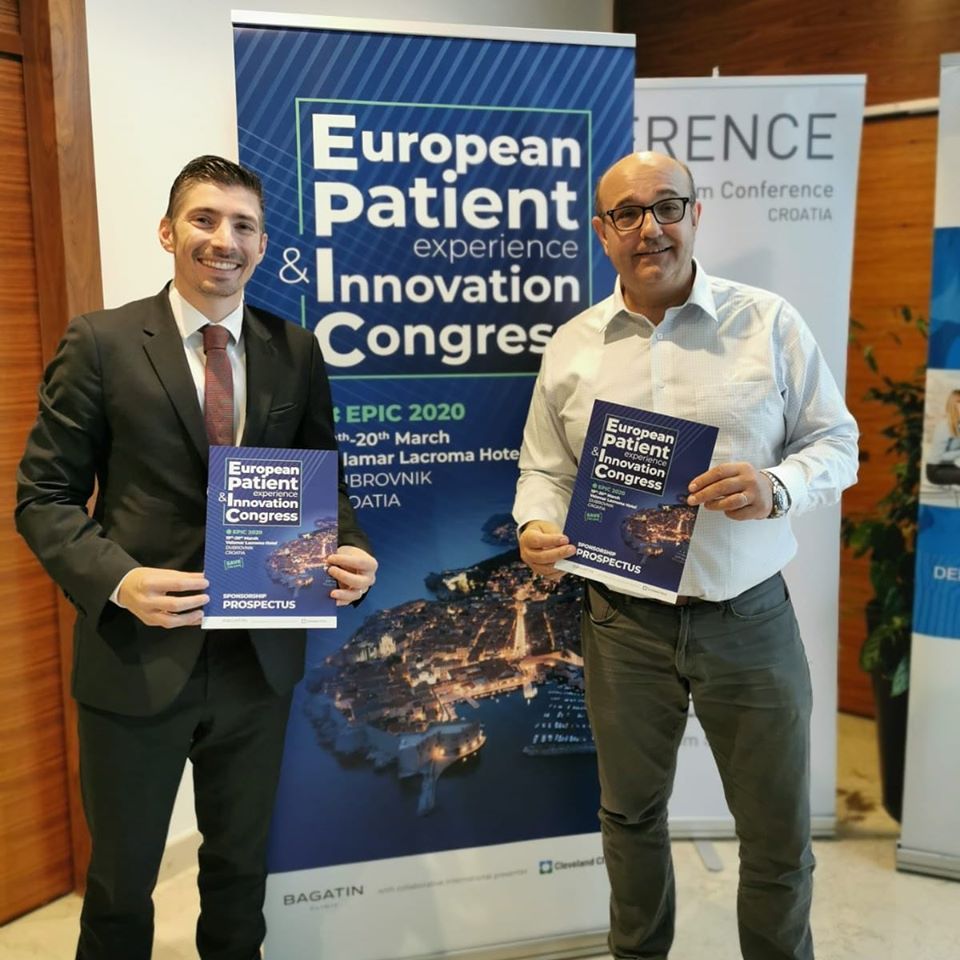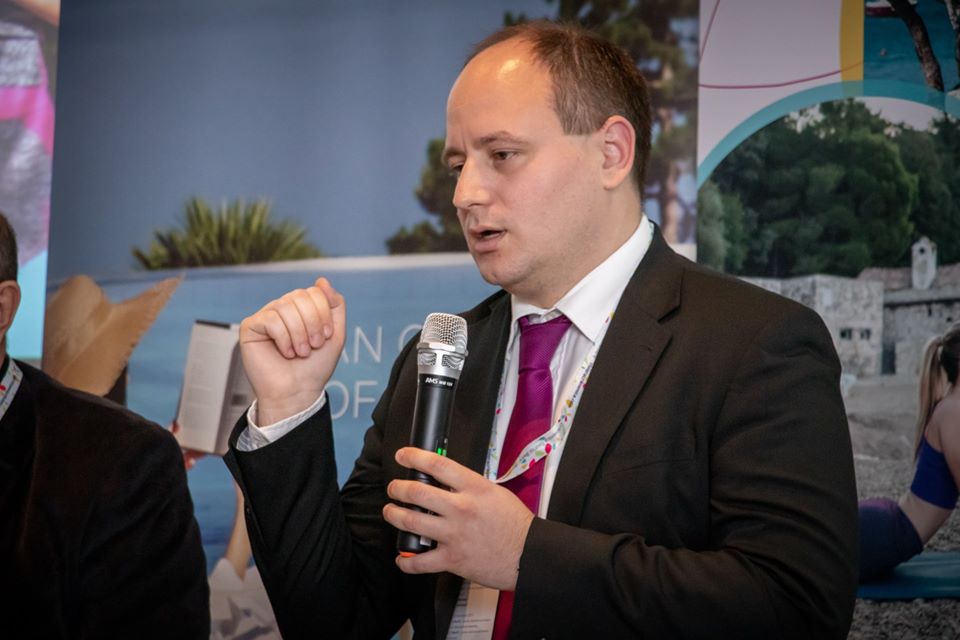CIHT 2019, the seventh edition of the Crikvenica International Health Tourism conference concluded on November 8, 2019. Outstanding from start to finish, did it contain a watershed transformation from potential to the beginnings of realisation for the Croatian medical tourism industry?
Full disclosure - this has been the best week in the history of TCN. Two new writers hired, our first intern programme with the University of Zagreb agreed, two big contracts signed, agreement with exciting partners to start our first EU-funded project, and two outstanding conferences. G2.5, the diaspora conference in Zagreb at the beginning of the week was one of the best I have been to in Croatia in terms of contacts and business done (see the conference report here), and I really wasn't expecting a better conference for quite some time. But then, just two days later...
CIHT 2019, the annual health tourism conference which has become a signature event for the very proactive Kvarner Health Cluster, was not only filled with an exceptional list of engaging and diverse speakers, but the levels of cooperation and joint initiatives were at a level visibly more noticeable than ever before.
CIHT 2019 was held in the village of Selce, a very short drive from Crikvenica. The reason, I suspect, was in honour of one of the true Croatian success stories in any sector, the outstanding 30-year success of the husband and wife team, Drs Ivan and Vlasta Brozicevic and their world-renowned Terme Selce facility, which has grown both in size and quality since its inception in 1989, and which includes no less than 120 Olympic medalists among its satisfied patients. I will be returning to Selce later in the year to do some in-depth features on that 30-year journey, which continues today. The Brozicevics were presented with a special award (see above) before the conference got properly underway, and there were few dry eyes in the house as Dr Vlasta took us through her inspirational journey of excellence and constant learning.

A very tough act to follow, but a challenge taken on with relish by the next speaker, one of the world's most in-demand tourism conference speakers, Doug Lansky. And it did not take long to realise why. His keynote session, called Successful Tourism, was laced with great tips for Croatia, both in directions to go and to avoid, and I will dedicated a later article to Lansky's presentation and the two subsequent workshops he conducted in the afternoon session.

One of the strengths of CIHT has always been that it aims high in terms of the quality of the speakers. And there are few higher places in the healthcare industry that Cleveland Clinic and Mayo Clinic, the two leading medical facilities in the world. Super Mario Skugor, Director of Education at Cleveland and himself a Croat, was followed by Rahul Kashyap, Assistant Professor of Anesthesiology at Mayo Clinic. Kashyap gave a comprehensive overview of the Mayo model of care, focusing on quality education and research collaboration.
Cleveland Clinic and Mayo Clinic presenting together, just after one of the world's top tourism speakers, all in a little village on the Kvarner coast in early November. Pretty impressive.

More was to come, indeed the most - at least for me - significant and encouraging presentation of the two-day event. Not perhaps for the content after such a high-quality start, but in terms of openness, honesty and willingness to engage. For the speaker was a politician.
Deputy Health Minister Mate Car's presentation was entitled The Interactions of Policy, Strategy and Health Tourism, but it was when he started talking about the state of Croatia's health tourism efforts, dividing them into three slides looking at the good, the bad and the ugly, that I saw for the first time (and I have been to many health conferences in the last two years) what I had heard from several in the industry - here was a senior official who was very interested in engaging with the other stakeholders, calling together meetings to hear their ideas and frustrations, even publicly publishing his official mobile number to make himself even more accessible. While 95% of ministers and deputy ministers tend to leave conferences as soon as the PR photo shoot and opening speeches are done, Car not only stayed until the end and was a very active participant, but he even found time to chat to me for over an hour on a wide range of issues concerning health tourism, the role of government and Croatia in general. It was very refreshing to see.

Car's relationship with one of the drivers of progress in the industry, Ognjen Bagatin, CEO of Bagatin Clinic, has been key. Bagatin was also a speaker on the first day, presenting arguably the most ambitious medical tourism conference in Croatia next March - the first-ever European Patient Experience and Innovation Conference, to be held in Dubrovnik. Against a backdrop of Bagatin with Cleveland Clinic CIHT speaker Super Mario and Cleveland CEO Tom Mihaljevic, Bagatin introduced his vision of EPIC 2020, a groundbreaking conference which his Bagatin Clinic is the main organiser.

Having observed the Croatian medical tourism industry for two years now, Ognjen Bagatin strikes me as being akin to the Luka Modric of the Croatian medical tourism industry, a midfield dynamo pulling the strings and connecting and lifting the entire team. Here he is, fielding questions with other speakers including Cleveland and Mayo Clinics and Deputy Minister Car.

He is certainly aiming high with EPIC, and if we stick with the football analogy, EPIC Dubrovnik could be the perfect World Cup Final stadium for medical tourism speakers. Bagatin showed the list of invited speakers, several of whom have already confirmed. You can learn more details about the EPIC conference on the official website.

Doug Lansky's two workshops on Destination Development and Creative Problem Solving ended the work part of the opening day, which was then followed by a very pleasant Healthy Party, with fine local wine and blue fish specialities. And music and dancing that went on late into the night and past the bedtime of this correspondent.
All were fully awake for the following morning's opening session, which included CIHT 2019 ambassador awards for the veteran and highly experienced husband and wife team, Elizabeth Ziemba (whose opening presentation was on Accreditation: What It Can and Cannot Do for Clinics and Hospitals) and Irving Stackpole. Now 47 years in the medical tourism business, I was impressed with how Stackpole has kept abreast of the frightening pace of change in technology, and his presentation of technology and change was thought-provoking - The Future of Health Tourism Is In Your Hand; How personalization and digitization changes the patient experience?
Health talk aside, I learned a new term caused by the digital age. Kids today are digital natives, while we older folk have been forced to enter a brave new world and have been forced to become digital immigrants. I liked that description. The morning session was completed by Djurdjica Simicic of IQM talking about Integrated Quality Destination Management, followed by TCN offering a foreign resident media view of the Croatian medical tourism potentials and realities.

The quality of leading international speaker continued. Marc Ortmans, a brand strategist from the UK opened the late morning special, his subject matter Building Brand Futures. A particularly interesting aspect to his very illuminating talk was the story behind the campaign to launch the Champions League logo and brand back in 1992. So successful was the campaign that the very same theme music is used today, some 27 years later, and the brand is now worth 4 billion dollars.

There was practical website advice from Croatia's leading Google Analytics expert, Robert Petkovic, in his presentation - I know your website generates visits to your clinic, but do you?

One of the points I made in my presentation at CIHT 2019 was that the word 'potential' was not only overused by everyone, but it was also a nice shield to hide the fact that not much progress was being made, or things worked on. Potential always points to somewhere in the future, and six years after medical tourism appeared in the 7-year strategic plan of the Ministry of Tourism in 2013, there is still no national medical tourism brand. Clusters operate individually, with Kvarner Health bigger than the brand of Croatia itself, and Zagreb investing $50,000 dollars in a questionable report - both in terms of content and whether the report might have been more useful to have been country-specific rather than just the capital city in isolation.
And so it was encouraging to listen to TOMAS – Health Tourism 2018: Attitudes and Expenditures of Visitors to Croatia, by Neda Telisman Kosuta, Senior associate at the Institute for Tourism in Zagreb. Although I have yet to see a full copy of the report, the presented results provided much food for thought and a basis for moving forward. One more part of this new gelling process.

There were more presentations which I did not attend due to other commitments, but a chance also to catch up with Luka Medical Tourism Modric before the long drive home. it is more than two years now since Ognjen Bagatin introduced me to the world of Croatian medical tourism excellence, his infectious enthusiasm quickly spilling over onto me. His energy is endless, his determination relentless. And the signs are there that his efforts - and the efforts of many others - are beginning to pay off.
There is a long way to go, but don't rule Croatia out from reaching any future medical tourism World Cup Final.
Learn more about the CIHT 2019 conference on the official website, or check out the video report on local news below.
To follow the latest in the Croatian medical tourism industry, follow the dedicated TCN section.


